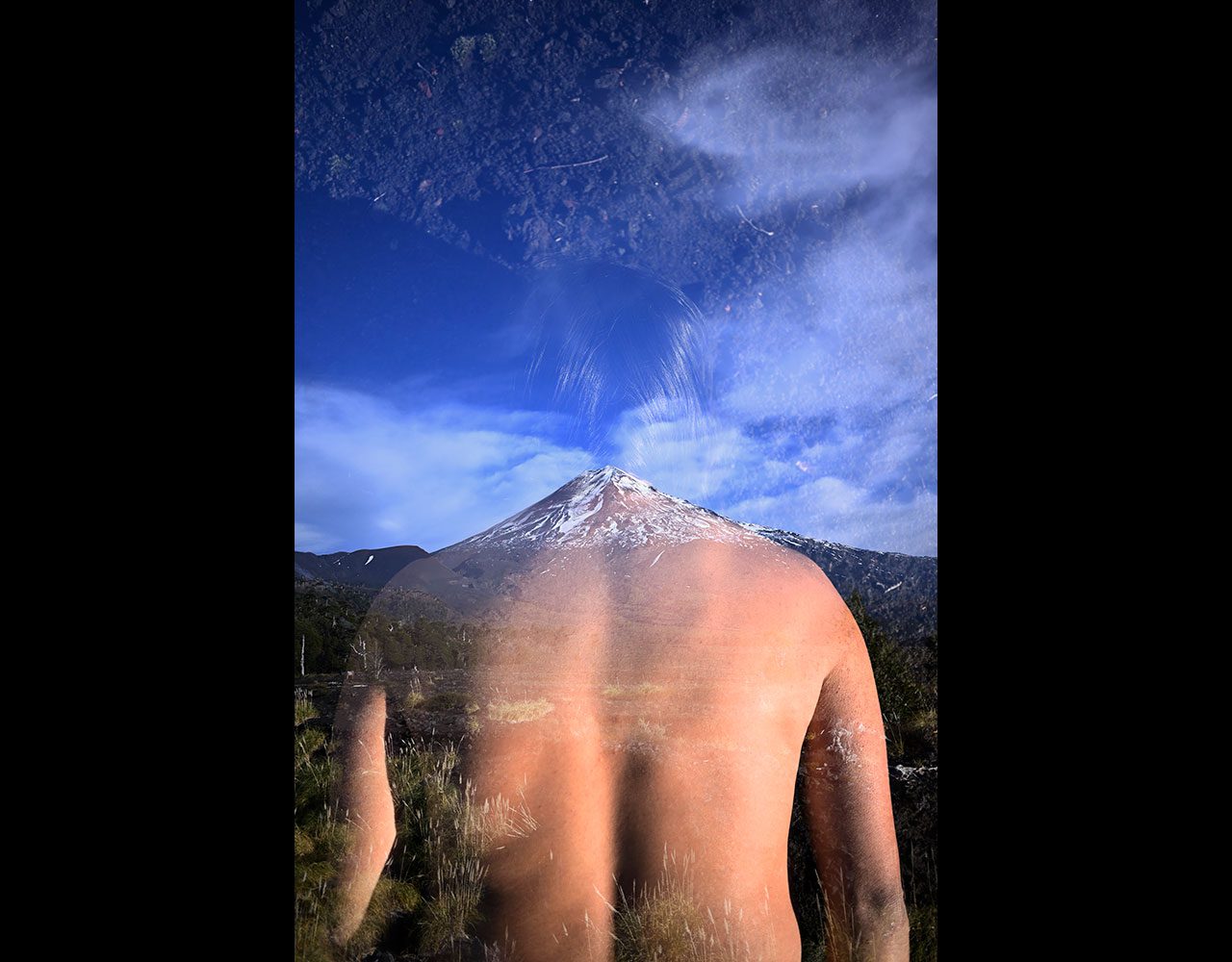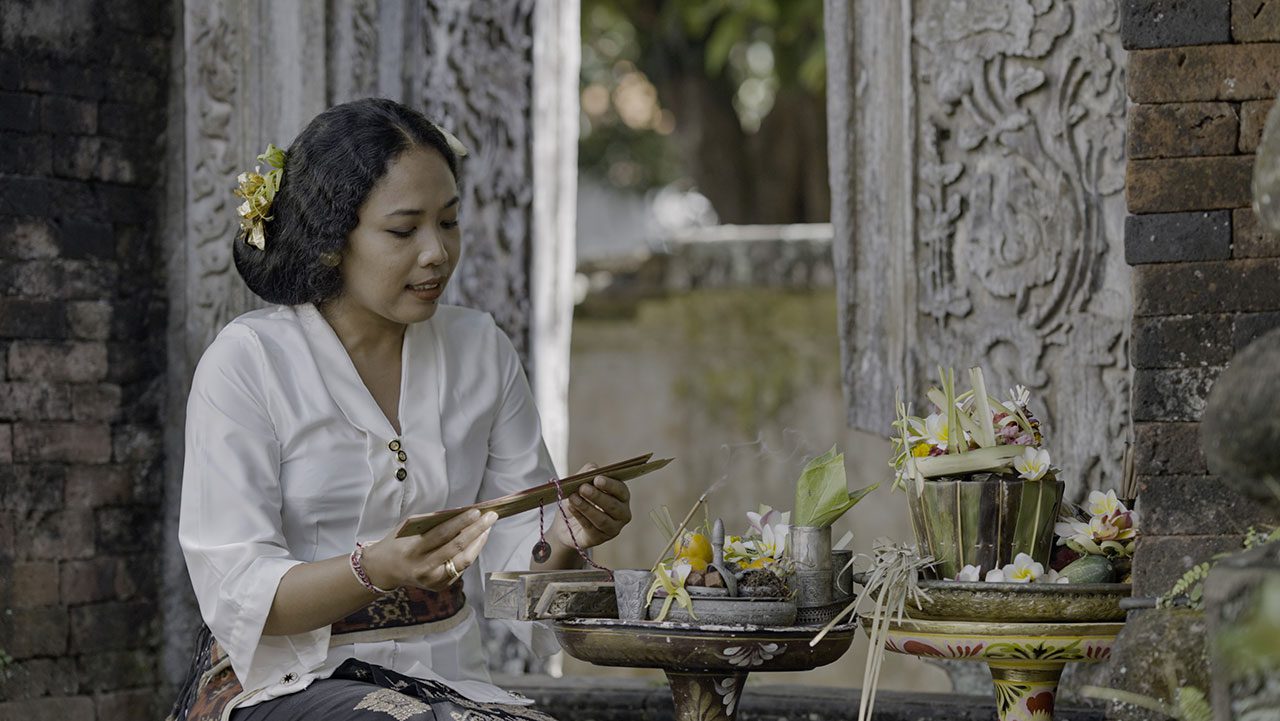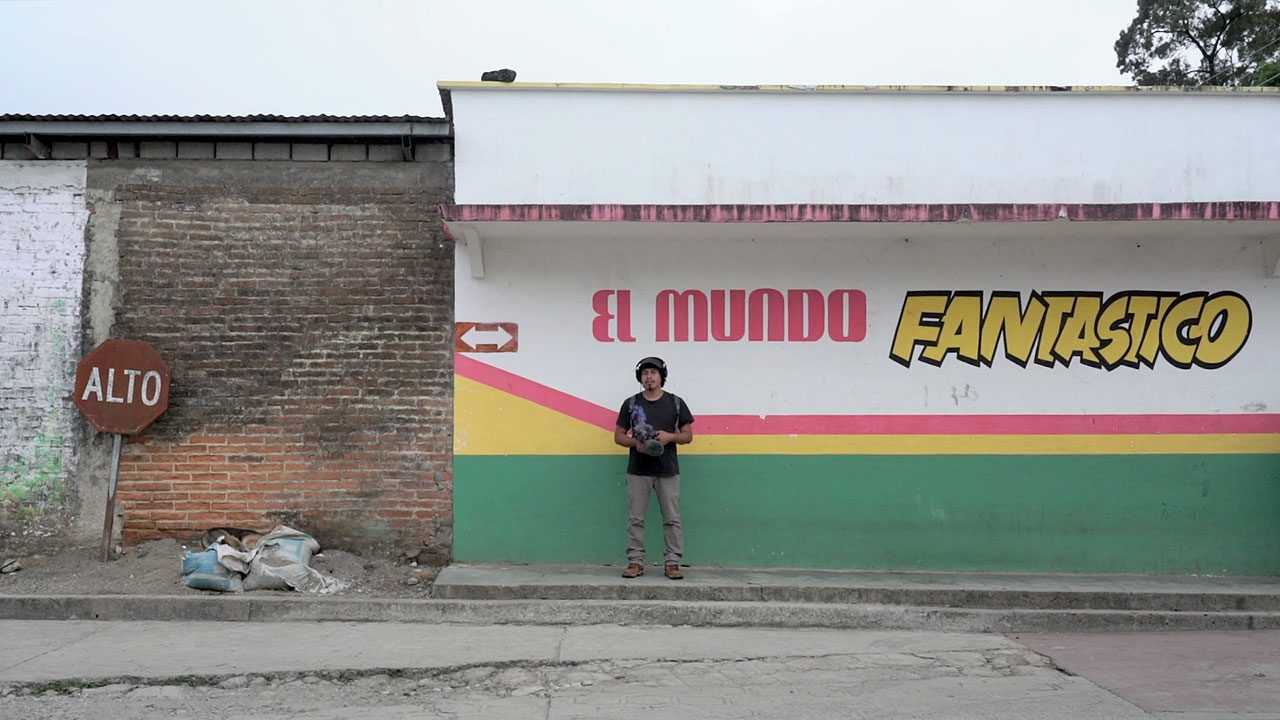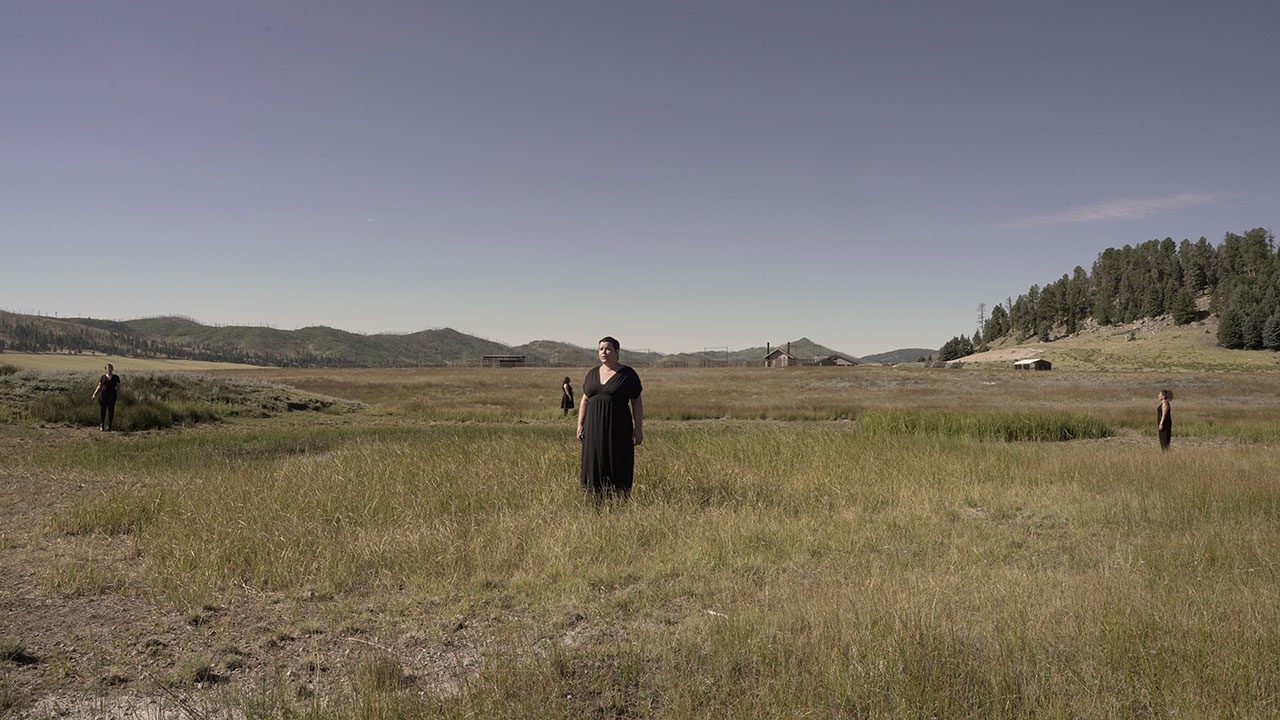PRESENTATION: (Re)Born from Volcanos
 Volcanoes are powerful forces of transformation that reshape our planet in dramatic ways. Through their eruptions, they create new land masses and islands, adding to Earth’s ever-changing surface. However, their power is also destructive, as they can obliterate landscapes, displace communities, and alter ecosystems. This dual nature makes volcanoes both creators and destroyers of land.
Volcanoes are powerful forces of transformation that reshape our planet in dramatic ways. Through their eruptions, they create new land masses and islands, adding to Earth’s ever-changing surface. However, their power is also destructive, as they can obliterate landscapes, displace communities, and alter ecosystems. This dual nature makes volcanoes both creators and destroyers of land.
By Dimitris Lempesis
Photo: ifa Archive
The group exhibition “(Re)born from Volcanos” invites us to look at the world beyond geopolitics and explore how cultural, political and spiritual practices relate to the recurring volcanic cycles of birth, destruction and recovery. The exhibition presents works by 20 artists who focus on these themes and remind us that nature is not a stable background, but is constantly changing and very much alive. The project is dedicated to forms of knowledges emerging from the largest range of volcanos known as the ‘Ring of Fire’, the largest volcanic belt in the world with over 400 active volcanoes in the Pacific. It connects places, lives and memories between Abya Yala (indigenous for America) and Asia; between the Rukapillan (indigenous for Villarrica volcano) in Chile, via the volcanoes Ipala (Guatemala), Matlalcueitl (Mexico), Tambora and Krakatoa (Indonesia), Rabaul (Papua New Guinea) to Pu-tauaki (Aetora/New Zealand) and many others. Among the Artists are: Seba Calfuqueo is from Mapuche origin. her work appeals to their inheritance to propose a critical reflection on the social, cultural, and political status of the Mapuche subject in the contemporary Chilean society as well as in Latin America. It includes installations, ceramics, performance, and video art to explore the cultural similarities and differences but also the stereotypes produced from the cross between indigenous and western ways of thinking.Their research has also the purpose of making visible feminist and sexual dissidence issues. Seba Calfuqueo are part of the Mapuche collective Rangiñtulewfü, which edits YeneRevista, online magazine of art, thought and writing in Wallmapu and AbyaYala language. Graphic artist Santos Chávez left Chile in 1977, self-exiled from the Chilean dictatorship, and after four years spent between Venezuela, Spain, Sweden, and East and West Germany, he settled in East Berlin in 1981, where he lived until 1994. Chávez grew up in Chile’s Mapuche territory, and his experience of herding sheep and cultivating the land marked his poetics of engraving as an assertion of Mapuche culture and aspirations. Chávez’s works are deeply characterized by the Mapuche cosmovision, where human beings, the elements, and the cosmos form one entity—within this, the landscape, the weather, as well as human and non-human life are all regarded as having equal agency. Antonio Paucar is a Peruvian artist, he lives and works between Berlin and Huancayo. The core of his work lies in his performances in which he creates a dense body of readings which are beyond language. Highly concentrated and subtle movements through natural, urban and public spaces demarcate intense imaginary world, loaded with symbolic and cultural readings. The meaning in his work can be found in the poignant staging of cultural difference. Esvin Alarcón Lam is a Guatemala-based visual artist that works across a range of disciplines such as painting, sculpture, performance, textile making, photography, sound, and video. His projects are grounded in the desire to create spaces for critical, affective relations with the past taking materiality and abstract forms as starting points. An important aspect of his practice is his belief that artists and art should contribute to shaping a public sphere and advancing social encounters. This led him to found the independent art residency “Pagoda Imaginaria” in 2018, a platform devoted to fostering international exchange, research, and experimentation in Guatemala City that invites artists to develop actions and activities in public space.
Mena Guerrero is a Guatemalan artist based in Antigua Guatemala. With a transdisciplinary approach, she explores painting, installation and performance. Drawing on her personal experiences and environment, she is interested in the interplay between landscape, color and texture to create multi-sensory experiences. Her work focuses on the transformation and continuity of self and body in the spaces we inhabit, conceived as starting points for imagining, situating and creating. In his photography, videos, objects and installations, Gabriel Rossell Santillán born in Mexico in 1977 and living currently in Berlin, struggles with the transformation of cultural knowledge. The assembly and structure of his work comes out of his studies in painting, drawing, literature and social sciences. What characterizes his working style and the way he handles material, is on one side his precise and clear context and on the other side his open and organic approach. His work is based on specific research and ethnographic field work done locally in Stuttgart, in Mexico (Nayarit) in the Huichol community and at the Ethnologischen Museum in Berlin-Dahlem. In his Huichol project he developed a method in which he connects, in a delicate manner, the portrayal of rituals and cultural practices of the Huicholes with his ethnological knowledge. Although Gabriel Rossell Santillán’s artistic interests go far beyond only formal and aesthetic questions, he nevertheless manifests a clear and profound connection with historical, anthropological, social and cultural contexts maintaining the characteristics of his current artistic mediums and materials. Raven Chacon is a composer, performer, and visual artist, creating videos, prints, photographs and installations that bring sonic experimentation into the gallery. Score-based creation is fundamental to his practice, encouraging generous forms of collaboration among performers and audiences, sights of significance, nonhuman actors, found sounds, and natural elements. In this way, he connects Diné (Navajo) worldviews and relationship models with Western classical, avant-garde, and art-music traditions. Citra Sasmita is a contemporary artist from Bali whose work focuses on unravelling the myths and misconceptions of Balinese art and culture. She is deeply invested in questioning a woman’s place in the social hierarchy and seeks to upend the normative construct of gender. Her whimsical compositions representing geographies of female figures and various natural elements are executed in the Kamasan Balinese painterly language that Sasmita has been developing in her practice. While rooted in mythological thinking with Hindu and Balinese-specific references, the scenes are equally part of the contemporary process of imagining a secular and empowered mythology for a post-patriarchal future. Australian and Papua Niuginian (New Guinean) multidisciplinary artist, educator, and researcher Lisa Hilli highlights the (in)visibility of Black and Melanesian women, through photography, video, textiles, and installations with a historical sensitivity to different languages, tools, and formats. Drawing in part from her autobiography as a Tolai/Gunantuna woman, her story becomes interwoven with the agency of Papua Niuginian women, and their struggles. Keep Your Bush Knife Sharp #BrukimBus acknowledges the Melanesian women that bring about their own change through a series of intervened archival materials such as political history posters showing the vibrancy of resistances led by Papua Niuginian women during the 1960s and 70s, a time of radical activism in the Pacific Island nations and globally, including the Kafaina and Nilai Ra Varden movements. As part of Hilli’s ongoing research and civic engagement, the posters are shown in print and via social media, situating them in a broader dynamic of circulating Oceanic knowledges. These reworked images become a visual narrative centred on the “meri blaus” (women’s blouse), a dress appropriated from missionary influence, made and worn by everyday, grassroots women of Papua Niugini. Meri blaus making continues to be a viable skill and form of economic income for women across Melanesia, using textiles as an unexpected yet central form of knowledge.
Participating artists: Seba Calfuqueo, Santos Chávez, Neyen Pailamilla, Antonio Paucar, Esvin Alarcón Lam, Mena Guerrero, Gabriel Rossell Santillán, Maurilio Sánchez Flores, José Luis Romero Chino, Emmanuel Tepal Calvario, Luis Ortiz, Saúl Kak & Charles Fairbanks, Raven Chacon, Citra Sasmita, Tita Salina & Irwan Ahmett, Lisa Hilli, Monai de Paula Antunes & Silvia Noronha
Photo: Seba Calfuqueo, Pillan, Serie Natura, 2024, Photo: Registro Diego Argote, © & Courtesy the artist
Info: Curators: Paz Guevara and Cristian Vargas Paillahueque, in conversation with Bettina Korintenberg and Gabriel Rossell Santillán, ifa Gallery Stuttgart, Charlottenpl. 17, Stuttgart, Germany, Duration: 15/11/2024-23/2/2025, Days & Hours: Wed-Sun 12:00-18:00, www.ifa.de/



